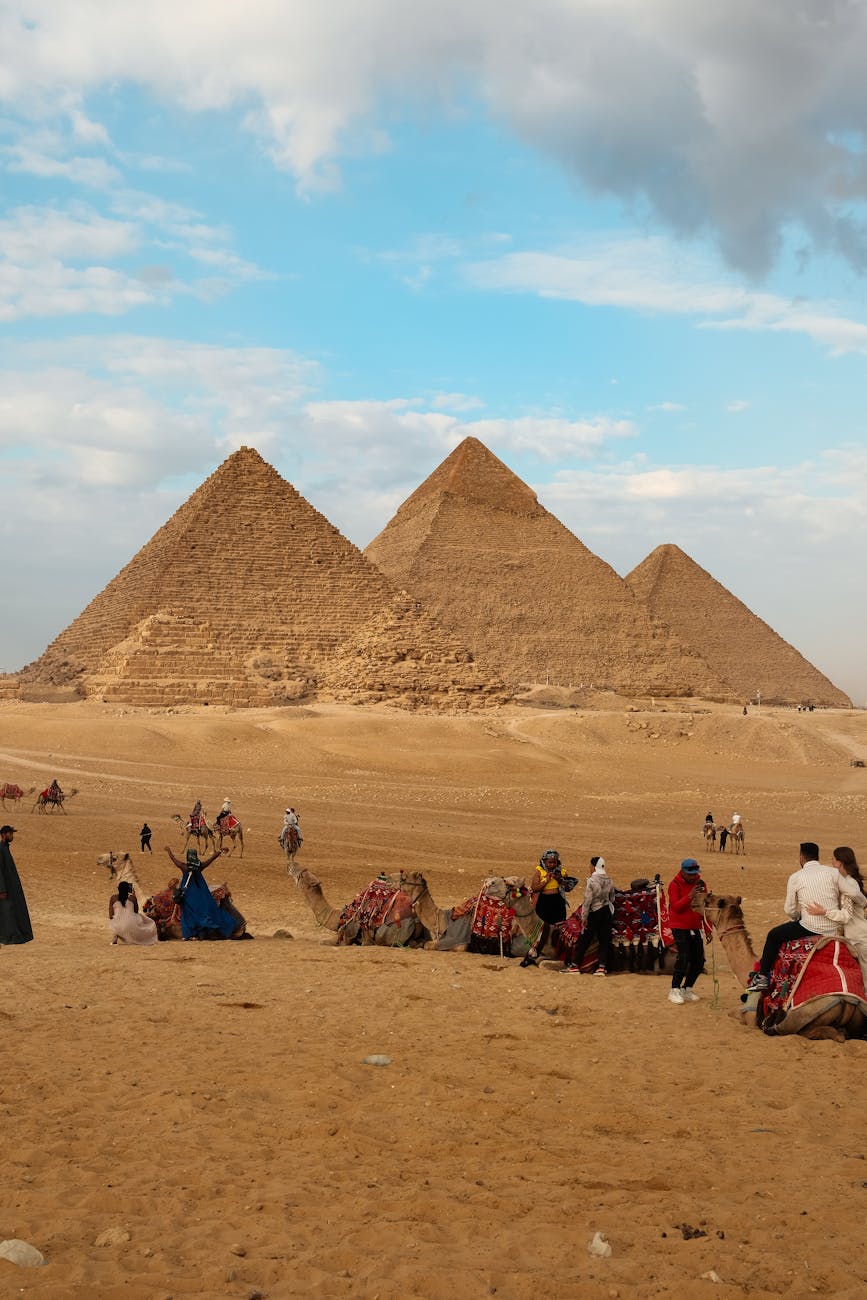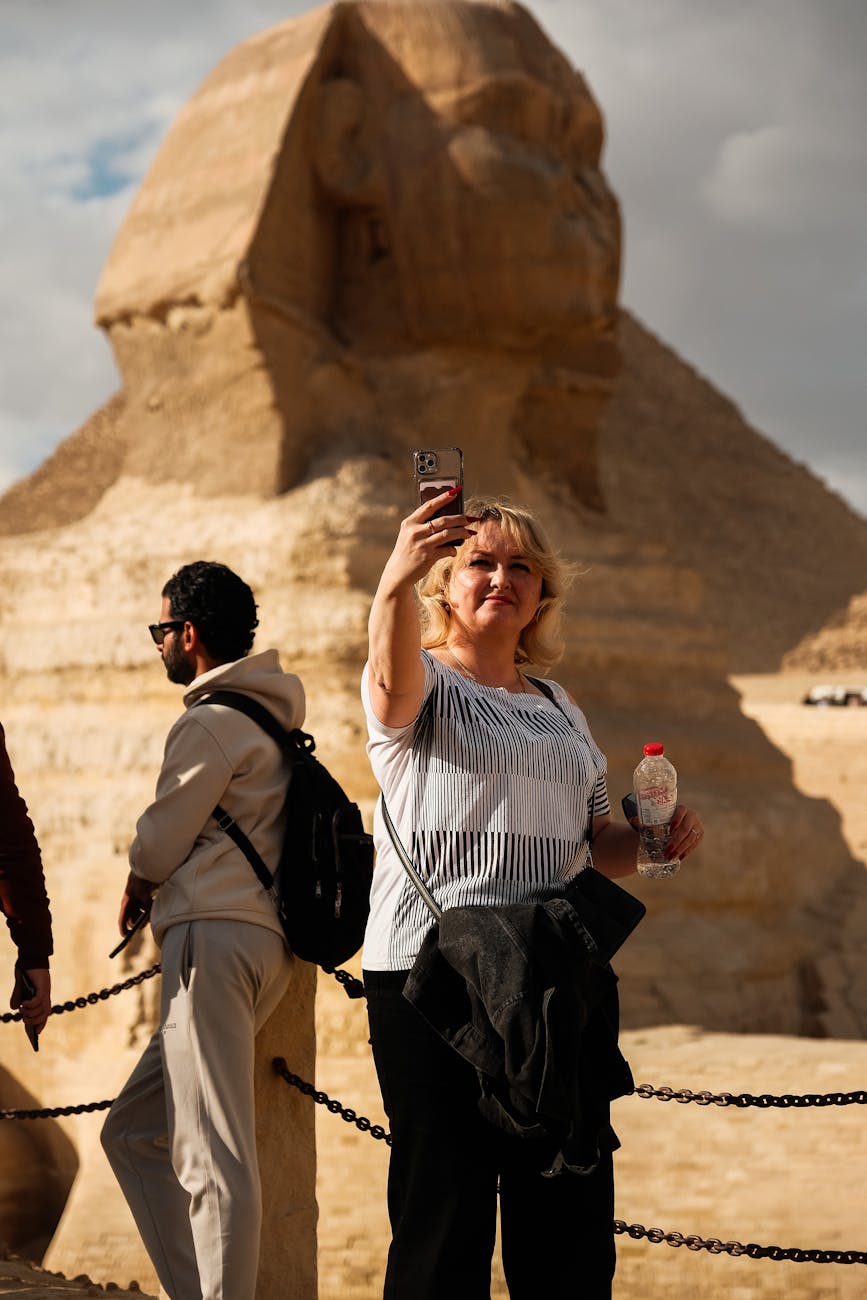Deserts might evoke images of endless sand dunes and scorching sun, but beneath the surface lies a treasure trove of history just waiting to be explored. From ancient ruins to iconic landmarks, each site tells a story that transcends time. The breathtaking beauty of these landscapes, combined with their rich historical significance, will undoubtedly ignite a spark of wonder and curiosity within you.
In this post, we will delve into some extraordinary desert historical sites that will leave you utterly amazed. These places offer a unique glimpse into bygone civilizations, showcasing their resilience and ingenuity against the harsh elements. So, buckle up as we take you on an unforgettable journey through the deserts and their iconic historical gems.
Table of Contents
- The Pyramids of Giza
- Petra: The Rose City
- Anu’s Temple
- Uxmal: A Mayan Marvel
- Chaco Canyon
- Frequently Asked Questions
The Pyramids of Giza
The Pyramids of Giza stand as monumental testaments to the ingenuity of ancient Egyptian civilization. Constructed around 2580–2560 BC, these grand structures, especially the Great Pyramid, were a feat of engineering that required meticulous planning and execution. Imagine the labor force, the tools, and the unwavering determination needed to build such magnificent landmarks! This is where the ancient Egyptians displayed their devotion to the afterlife and the gods.
Visitors often find themselves in sheer awe as they gaze upon these historic edifices, surrounded by the vastness of the Sahara. You can marvel at the intricate hieroglyphics that adorn the tombs, each telling a story of its own. As the sun sets, the Pyramids glow with an ethereal light, casting long shadows upon the sand, creating an unforgettable vista that captures the essence of ancient mystery. Exploring this iconic site is not just a journey through history but also an invitation to reflect on humanity’s quest for eternity.
Petra: The Rose City
Hidden within the rugged mountains of Jordan, Petra is often referred to as the Rose City, named for the stunning pink hue of its rock-carved architecture. This ancient Nabatean city, established around the 5th century BC, thrived due to its strategic location along trade routes, becoming a vital hub for commerce and culture. As you step through the Siq, a narrow gorge that leads into Petra, anticipation builds, and the majestic facade of Al-Khazneh—a monumental temple—comes into view, an unforgettable encounter that immerses you in the history of a civilization that flourished against all odds.
Walking through this architectural wonder, it’s hard not to feel connected to the past. The ingenuity in carving structures directly from the rock face reflects an incredible mastery over the natural landscape. Adding to the allure, visitors can hike to the Monastery, a breathtaking site that offers panoramic views of the surrounding valleys. The serenity and beauty of Petra will undoubtedly captivate your heart, making it a must-visit destination that promises to leave an indelible mark on your soul.
Anu’s Temple
Perched amidst the desolate beauty of the Iranian plateau, Anu’s Temple showcases the architectural brilliance of ancient Persia. This historical site, dedicated to the sky god Anu, is a prime example of the advanced temple construction found in the Susa region around 4000 years ago. Engaging with the site feels almost surreal—standing among the remnants of such an important cultural landmark, you’ll find yourself contemplating the sophisticated belief systems that shaped a civilization.
The temple ruins, although partially in shambles, still express the grandeur that once defined the spiritual heart of ancient cultures. Researchers and archaeologists continuously unravel the stories embedded within the pottery and inscriptions found at the site, making every visit an evolving experience. The aura of history, combined with the stark beauty of the surrounding landscape, creates a remarkable atmosphere for reflection and admiration.
Uxmal: A Mayan Marvel
In the heart of Mexico’s Yucatán Peninsula lies Uxmal, an archaeological site that is an exquisite reflection of Mayan architecture. This UNESCO World Heritage site dates back to the 7th century AD and boasts intricately designed structures, such as the Pyramid of the Magician and the Governor’s Palace. These buildings illustrate the complexity of the Mayan civilization and its advanced understanding of astronomy and mathematics. The grandeur of Uxmal proves that even amidst a vast and arid landscape, creativity knows no bounds!
Discovering Uxmal transports you back to a time of vibrant culture and historical significance. The meticulous stonework, adorned with elaborate carvings and lattice design, mesmerizes every observer and invites exploration. While wandering through the site, the commitment of the Mayans to their craft shines through in every corner, inspiring a deep appreciation for their ingenuity. Uxmal is not just a site to visit; it’s an opportunity to immerse yourself in a culture that has left an everlasting impact on history.
Chaco Canyon
Chaco Canyon, Located in northwestern New Mexico, is a gem that embodies the rich history of Native American habitation in the desert. This UNESCO World Heritage site flourished between AD 900 and 1150 as a significant cultural and political center for the Ancestral Puebloans. As you explore the astounding ruins, including great houses and kivas, you can’t help but imagine the vibrant life that once thrived in this remote area of the desert.
The community’s architectural prowess is on full display, with multi-story structures built from sandstone and timber. The alignment of these buildings with celestial events illustrates the inhabitants’ advanced knowledge of astronomy. Visitors often feel an emotional connection to the site as the remnants of an ancient society whisper stories of resilience and ingenuity in the face of adversity. Chaco Canyon thus offers not only a lesson in history but also an invitation to reflect on the enduring spirit of a civilization that embraced the vastness of the desert.
Frequently Asked Questions
What are some essential items to bring while visiting desert historical sites?
It’s crucial to pack plenty of water, sunglasses, sunscreen, and sturdy hiking shoes. Depending on the temperature, layered clothing might also be a good idea.
Can these sites be visited year-round?
Most desert historical sites can be visited year-round, although the best time is usually in the cooler months. Be sure to check seasonal accessibility, as some trails may close during extreme weather.
Final Thoughts
Exploring these mind-blowing desert historical sites offers a profound connection to the past while igniting a sense of wonder about human achievement. Each site tells a unique story, showcasing the resilience and creativity found within diverse cultures that have thrived amidst the stark beauty of the desert. Adventure awaits, so don’t miss out on these spectacular treasures as you embark on your journey through history.
Image Credit: Pexels





